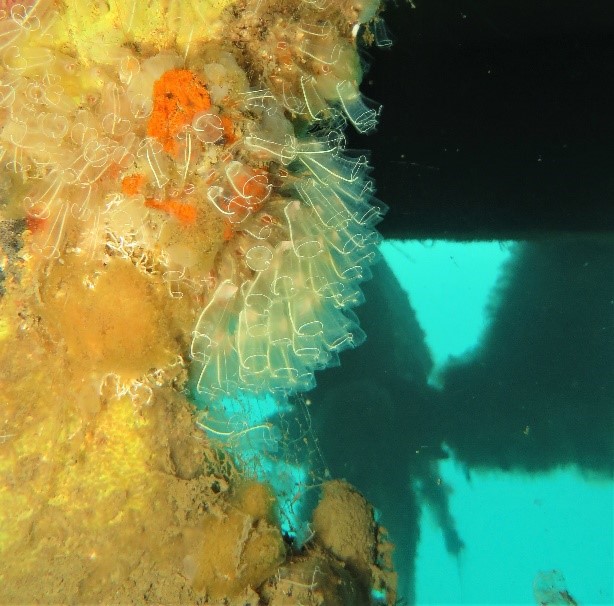Long-term indicators for non-indigenous species (NIS) in marine systems

The Convention on Biological Diversity 2010 Biodiversity Targets established the need for countries to accurately assess and report on 'Trends in invasive alien species' that threaten biodiversity. Central to achieving this outcome was the need to develop reliable, meaningful indicators of the status of invasive species in each country that could be used to measure progress toward meeting Aichi Target 9 (Invasive Species) under the CBD Strategic Plan for Biodiversity 2020.
In 2016, NIWA and MfE developed a suite of long-term indicators that were used to report on the current status of NIS in New Zealand waters. These included:
- Time series information on the presence/absence of NIS in New Zealand waters, and by region.
- Range expansion/decrease for the key selected species.
- Information on the abundance/prevalence and change in abundance/prevalence for key selected species.
'Key species' were selected to encompass a range of life habits, taxonomic and trophic groups that occur in a variety of different environments. They were also chosen for their alignment with criteria recommended to describe a species as ‘invasive’ (McGeogh et al. 2012).
Nine marine NIS were selected to report on. They were:
- Asian date mussel, Arcuatula senhousia Benson, 1842;
- Asian paddle crab, Charybdis (Charybdis) japonica (A. Milne-Edwards, 1861);
- Australian droplet tunicate, Eudistoma elongatum (Herdman, 1886);
- Greentail or ‛greasy-back’ prawn, Metapenaeus bennettae Racek andDall, 1965;
- Mediterranean fanworm, Sabella spallanzanii (Gmelin, 1791);
- Clubbed tunicate, Styela clava Herdman, 1881;
- Fragile clam, Theora lubrica Gould, 1861;
- Undaria, Undaria pinnatifida (Harvey) Suringar, 1873.
- Indo-Pacific ascidian Symplegma brakenhielmi (Michaelsen, 1904)
The 2019 'Our Marine Environment' report provides an update on these metrics. As of March 2018, there were 377 NIS that had been recorded in New Zealand marine waters; 213 of these were found in natural habitats or on permanent artificial substrata and are considered to have established self-sustaining populations. Between 2016 and March 2018, 14 species that are considered new-to-New Zealand were detected and identified. Only three of these species are considered to have established naturalised populations. The additional 11 species were recorded from vessels and other structures that are not permanently located in New Zealand.
The data and observations for this report were taken from the MHRSS, Port Biological Baseline Surveys, Marine Invasives Taxonomic Service and Literature records that underpin this marine biosecurity portal. More information on the 'Our Marine Environment 2019' report and results on the current status of marine NIS in New Zealand can be found through the links below.
For more information:
Ministry for the Environment & Stats NZ (2019) New Zealand’s Environmental Reporting Series: Our marine environment 2019. Available from www.mfe.govt.nz and www.stats.govt.nz.
Seaward, K & Inglis, GJ (2018). Long-term indicators for non-indigenous species (NIS) in marine systems. Prepared for the Ministry for the Environment, project MFE19501. NIWA Client Report No: 2018310CH.[1.56MB PDF]
Stats NZ Marine NIS Indicators.
MfE data on marine pests in New Zealand.
Additional Reading
Inglis, G., Seaward, K. (2016) Indicators of non-indigenous species in marine systems. Prepared for the Ministry of the Environment: 74. [1.54 MB PDF]
McGeoch, M.A., Spear, D., Kleynhans, E.J., Marais, E. (2012) Uncertainty in invasive alien species listing. Ecological Applications, 22(3): 959-971. doi:10.1890/11-1252.1.